Project profile: The Harkin Institute
Going beyond universal design to be truly inclusive
Feb 9, 2024
5 minutes
Founded by Senator Tom Harkin and his wife Ruth Harkin, the Harkin Institute for Public Policy and Citizen Engagement at Drake University has been a catalyst for advancing social justice and equity since 2013. When the institute outgrew its home, Senator Harkin challenged the design team to innovate on what it means to be an accessible, inclusive workplace.
Tom Harkin represented Iowa for 40 years in the US Congress—including 30 in the Senate. Throughout his career, he built a record as a staunch supporter of disability rights, labor and employment, retirement security, and wellness and nutrition.
Inspired by the challenges his Deaf brother experienced, he pioneered his signature legislation—the 1990 Americans with Disabilities Act (ADA)—which prohibits discrimination against individuals with disabilities.
Today, the Harkin Institute for Public Policy and Citizen Engagement upholds his legacy. The institute focuses on informing citizens, inspiring creative cooperation, and catalyzing change on issues of social justice, fairness, and opportunity.
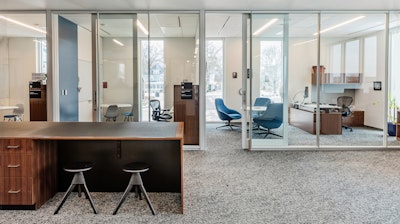
The next chapter
When the Harkin Institute began to outgrow its facility, Senator Harkin envisioned a new space built on the ADA’s key pillars: equality of opportunity, full participation, independent living, and economic self-sufficiency.
The institute chose architecture firm BNIM to design the new Tom and Ruth Harkin Center (now housing the Harkin Institute). Construction wrapped up in 2020. MillerKnoll’s Herman Miller brand was selected as their furniture partner because of its commitment to creating inclusive environments.
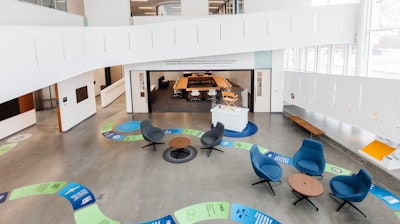
A symbol of universal design
“Nihil de nobis, sine nobis”— or “nothing about us without us”—communicates
the idea of inclusive democracy: that no policy should be created without the input and participation of the people it directly affects.
“Nothing about us without us” is synonymous with disability rights activism, and an important principle behind the design of the Harkin Institute. A diverse group within or allied to the disability community weighed in on the new facility.
“During the design phase, I challenged the building advisory team to design a building that went beyond legal compliance and instead brought about innovation in what it means to be an accessible, inclusive workplace,” said Senator Harkin. “The Harkin Institute’s new building design symbolizes how universal design can guide the future of the workplace.”*
I challenged the building advisory team to design a building that went beyond legal compliance and instead brought about innovation in what it means to be an accessible, inclusive workplace.
Senator Tom Harkin, founder of the Harkin Institute
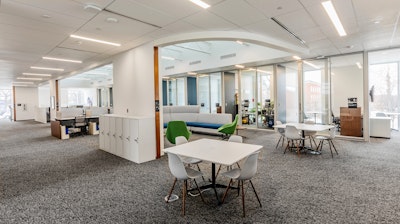
Inclusive design principles
Led by BNIM, in collaboration with the Harkin Institute and Herman Miller, the design team developed four guiding principles to organize inclusive design strategies for the new building and site design.
Generous space: Create spaces where people don’t need to ask for special accommodations. Anticipate what’s needed and make it available.
Equitable experiences: Solve for the desired experience in the most inclusive way possible. Do not exclude anyone from an experience because of their ability or identity.
Clear path: Allow for an environment that’s intuitive for everyone, including people there on a regular and part-time basis and visitors.
Individual empowerment: Allow no limitations for a person’s ability to use a space throughout the day.
Principles in action
Herman Miller applied these four guiding principles to the furniture strategy, which plays a key role in improving how people interact with the environment—and one another.
Creating workplaces that reinforce belonging unlocks the potential of an organization’s most important investment: its people.**
Here’s what it looks like at the Harkin Institute:
Team setting
Because physical range of reach varies from person to person, Herman Miller selected comfortable furnishings with convenient access to power, switches, work tools, and personal belongings. Across the entire building, BNIM designed wider aisleways that accommodate a general wheelchair to pass and provide visible sightlines whether people are sitting or standing.
Lounge collaborative setting
This space features materials and finishes with visual and tactile contrast to help eliminate confusion for low-vision and blind individuals or those who are easily distracted by visual complexity. Reachable, intuitive, and consistent access to power and data in the side tables provides equity, control, and access to technology for everyone.
Private conversational setting
To support cognitive processes, Herman Miller provided visual clarity by orientating products in a way that effectively conveys their use with balance and clean lines. The symmetrical furnishings here don’t favor handedness and communicate how they’re used in the setting. The space and furniture accommodate every person no matter how they use the space, their handedness, or their body type.
All are welcome
All Harkin Center spaces are meant to support those living with disabilities. The building is the one place on the Drake University campus that can accommodate and provide facilities for any special needs of students, staff, and the general public.
“The space is intended to avoid looking like special accommodations were made,” said Jason Rosenblatt, Senior Workplace Leader at MillerKnoll who collaborated with BNIM and helped design furniture settings for the Harkin Center. “It’s meant to be an inherently desirable space because of all that was considered.”
If you need help creating spaces with inclusivity at their heart, let’s talk.
3-point recap
Since 2013, the Harkin Institute for Public Policy and Citizen Engagement at Drake University has been a catalyst for advancing social justice and equity.
When the institute needed a bigger facility, they enlisted architecture firm BNIM and Herman Miller, who developed four principles to guide inclusive design strategies.
The Harkin Center goes beyond universal design, supports those living with disabilities, and improves how people interact with their environment and one another.
Featured products
Explore designs that helped facilitate inclusivity at the Harkin Institute.
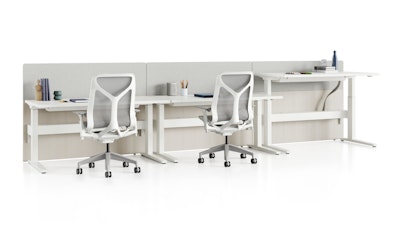
Renew Link by Herman Miller
This standing desk system brings health and focus by accommodating both sitting and standing postures.
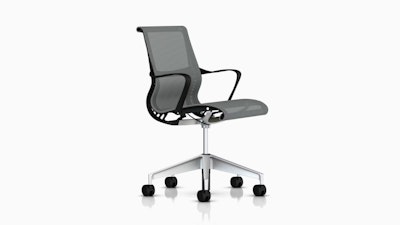
Setu Chair by Herman Miller
Setu responds to people’s natural movement and provides instant comfort.
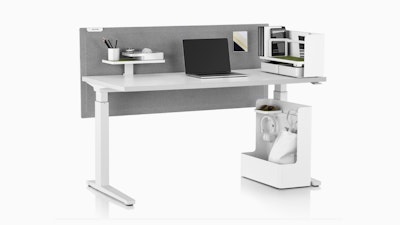
Ubi Work Tools by Herman Miller
Ubi is a collection of tools that enable people to organize, personalize, and work effectively.
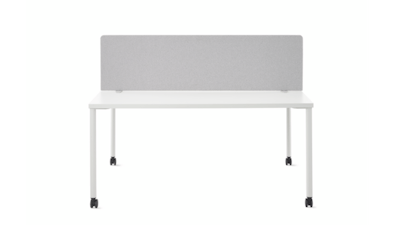
OE1 Movable Screen by Herman Miller
This agile partition stands on its own with no attachment necessary. It’s tackable on both sides so people and teams can pin up work and personal items.
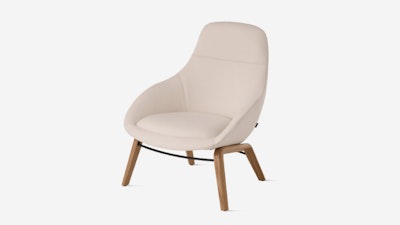
Always Lounge Chair by NaughtOne
This chair’s relaxed form looks great from all angles, and its wealth of upholstery options makes it completely customizable.
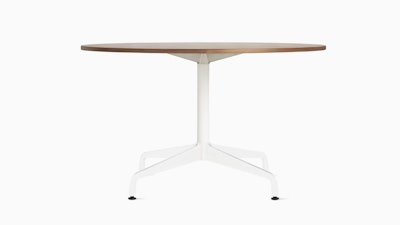
Eames Table by Herman Miller
Designed with an architect's focus on stability and an artist’s eye for proportion, the Eames Table is the intersection of versatility, strength, and beauty.

Eames Turned Stool by Herman Miller
The stool is a versatile heirloom that’s deep enough to form a comfortable seat and shallow enough to balance a cup of coffee.
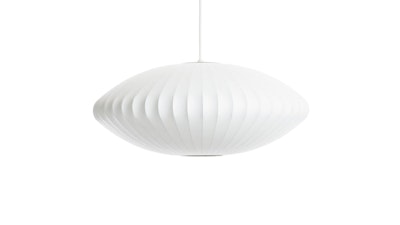
Nelson Bubble Lamp by Herman Miller
Adding a touch of softness and luminosity to interiors, this elegant fixture is fashioned from a sturdy, lightweight steel frame and offers a delicate, floating quality.
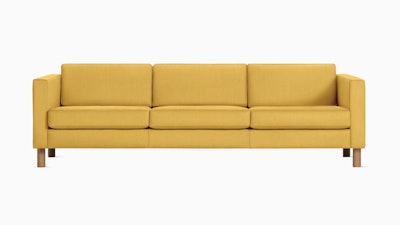
Lispenard Sofa Group by Herman Miller
Without feeling overstuffed, Lispenard’s comfortable proportions deliver the plush softness you’d expect from casual lounge seating.